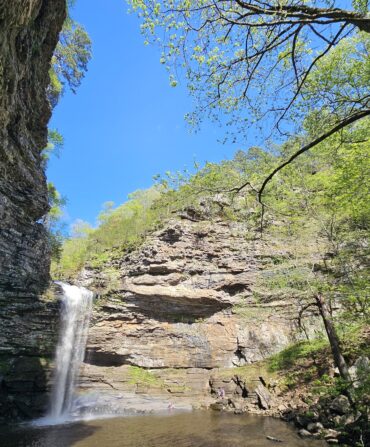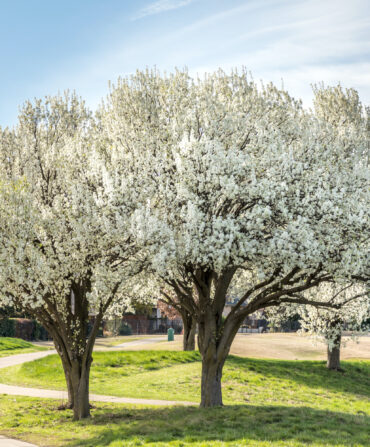Some plants enter softly into spring, like a quiet crocus emerging from warmed soil. But others positively explode on the scene in all their bright glory, especially when they’re planted en masse. From acres of bluebonnets to cherry blossoms by the hundreds of thousands, these jaw-dropping floral views will yank you right out of winter hibernation.
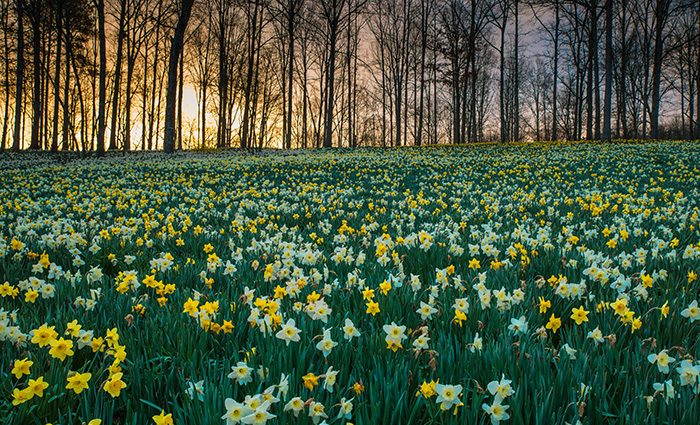
Courtesy Gibbs Gardens
Daffodils at Gibbs Gardens
Ball Ground, Georgia
Average bloom time: March 1-April 15
Twenty million daffodils in at least one hundred varieties spread out over fifty acres at the foothills of the North Georgia mountains. Owner Jim Gibbs spent thirty years developing the property before he swung open his garden gates in 2012 and let the public step inside. Today, the bursts of golden flowers dot a landscape of ponds, streams, and waterfalls, all viewable from meandering paths—a mecca just an hour north of Atlanta.—gibbsgardens.com

Courtesy Gibbs Gardens)
Bluebonnets at the Lady Bird Johnson Wildflower Center
Austin, Texas
Average bloom time: March-April
Lone Star State visitors can spot the famous wildflower throughout central Texas, but this rambling garden’s lush bluebonnet meadows are a sure bet. The center at the University of Texas at Austin is one of only three gardens nationwide that emphasizes native wildflowers. Swaths of Lupinus texensis share ground with about 650 other species of native Texas plants on 279 acres of gardens, meadows, and hiking trails.—wildflower.org
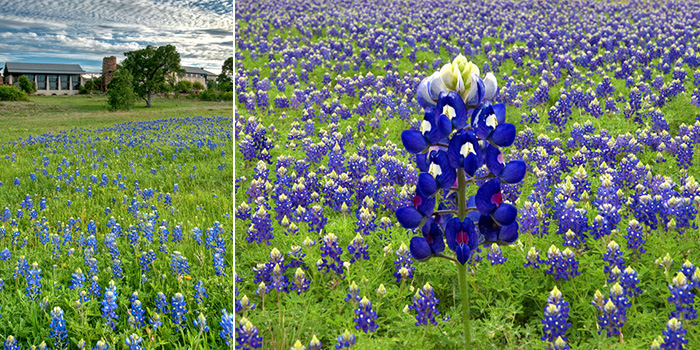
Courtesy Lady Bird Johnson Wildflower Center
Forsythia at Dumbarton Oaks
Washington, D.C.
Average bloom time: March 10-29
Landscape architect Beatrix Farrand was the only founding woman member of the American Society of Landscape Architects and was known to do things her way. In the 1920s, she planted a forsythia dell at Dumbarton Oaks, a Harvard research library and museum in Georgetown surrounded by historic gardens that are considered her crowning achievement. The dell is one of the few areas that Farrand designed around a single plant varietal, which today sprawls in a golden tangle down a hillside, across a valley, and north into Dumbarton Oaks Park.—doaks.org
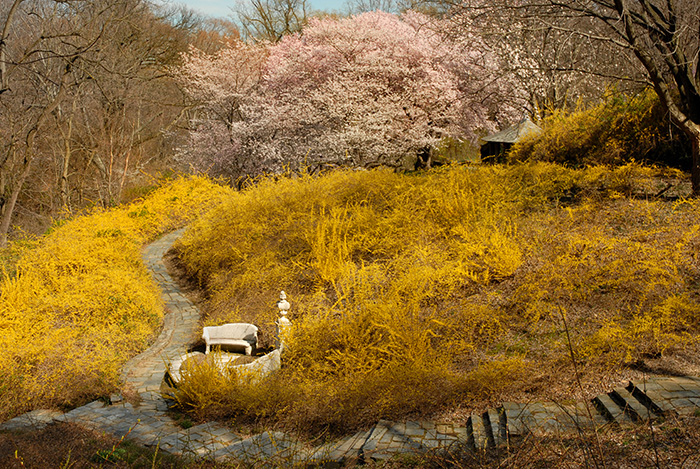
Courtesy Dumbarton Oaks
Tulip Extravaganza at Garvan Woodland Gardens
Hot Springs National Park, Arkansas
Average bloom time: March (most blooms expected March 13-25)
Tulips are firecracker plants—they explode for just a short time before making room for the rest of spring’s flowers. However, the work of preparing Garvan’s spring display of tulips takes much longer. The horticulture crew started planting in December—4,000 bulbs per day per team of two gardeners until they had planted 140,000 bulbs in 89 varieties. The tulips are laid out by hue, bloom time, and height to create dramatic sweeps of color. Don’t miss their quick mid-March bloom boom.—garvangardens.org
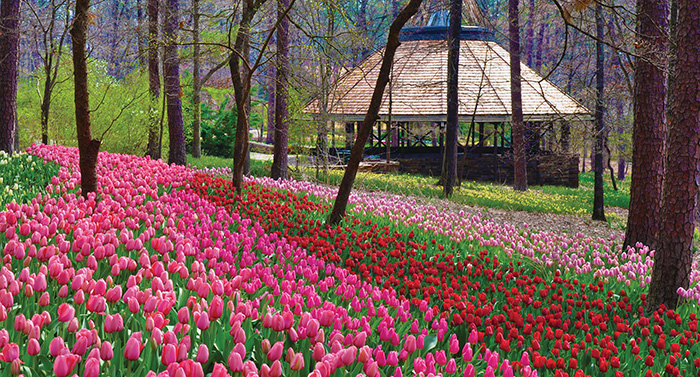
Courtesy Garvan Woodland Gardens
34th Annual International Cherry Blossom Festival
Macon, Georgia
Festival dates: Late March – Early April
You’ve heard all about the cherry blossoms in our nation’s capital, but check the Congressional Records and you’ll see little Macon, Georgia, referred to as the Cherry Blossom Capital of the World. It all started in 1949 when a local realtor discovered a Yoshino cherry tree in his backyard. During a business trip to D.C., he spotted a similar tree, compared cuttings, and learned to propagate the trees himself. He started a cherry revolution in the town, and today more than 350,000 Yoshino cherry trees burst into pink and white cotton-candy glory. Central City Park is the main hub of the splendor, but spend some time rambling the historic district’s tree-lined neighborhood too. You can get there by way of Cherry Street.—cherryblossom.com
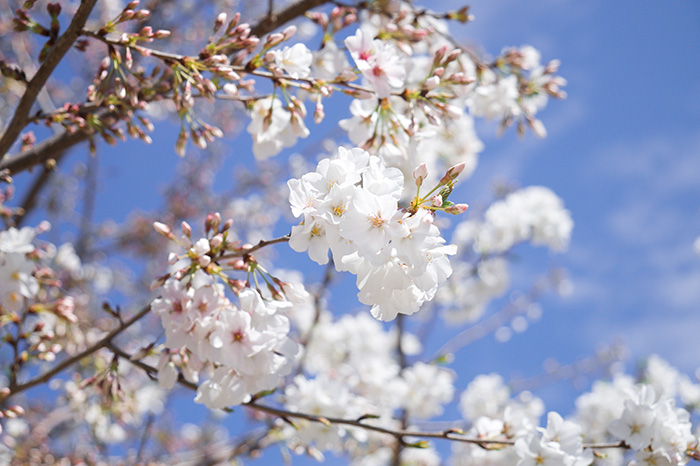
Matt Smith


